Visiting Ireland from the USA
How to Get Here, What to See and Where to Stay
Dublin has long welcomed tourists from every corner of the globe, and figures from 2024 show us that one in every 5 tourists to Ireland come from one place in particular – the United States of America.
In recent years the number of American tourists visiting Ireland has been significant. Back in 2019, approximately 1.7 million visitors from the United States travelled to Ireland, making it one of the largest sources of international tourists for the country. This figure represented a slight decrease from previous years, reflecting broader trends in global travel patterns. Post Covid, by May 2024, American tourists accounted for 20% of all foreign visitors to Ireland. American tourists contribute over €1.6 billion to the Irish economy, indicating how American tourism remains a vital component of Ireland’s tourism industry.
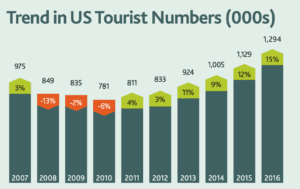
Source: Fáilte Ireland
Onward Travel to Dublin & Beyond
Once Landed in Dublin, visitors have a number of options for onward travel into the city centre.
- Public buses
- Routes 16 and 41: These buses are the most economical option, costing around € Route 16 goes to O’Connell Street, whilst route 41 heads towards lower Abbey Street, in the city centre.
- Aircoach
- Running every 15-30 minutes, with tickets starting from €8 and routes servicing Dublin’s city centre and southern suburbs.
- Dublin Express
- Another coach service to the city centre, with adult tickets starting from €8 one way.
- Taxi
- There are taxis available outside both terminal buildings. Depending on time of day, journeys to the city centre can cost from €25- €40
- Private Transfers
- Numerous private operators offer transfers, or our concierge team would be happy to arrange a limousine service, just contact the team at shelbourne@theshelbourne.com

Other Travel Considerations
- There is currently no train or light rail link from Dublin airport, so forward planning is essential.
- Consider getting a Leap card, a prepay travel card that is accepted on most public transport and often offers the best fares.
- Check timetables as services are subject to change
Must See Attractions in Ireland
Dublin is a great base for exploring the entire island of Ireland. Galway City is under 3 hours away by car, and Belfast can be reached in under 2.5 hours. With the entire country so accessible, why not use The Shelbourne as your base to explore the Emerald Isle?
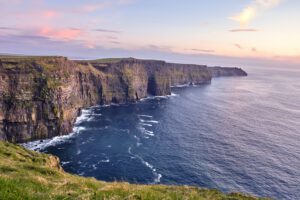
Located in County Clare, the iconic cliffs rise dramatically above the Atlantic Ocean, providing breathtaking views. The Cliffs of Moher, located on Ireland’s Wild Atlantic Way, are one of Ireland’s most visited natural attractions.

Famed for its Blarney Stone, this Castle in County Cork is renowned for its historical significance and beautiful gardens.
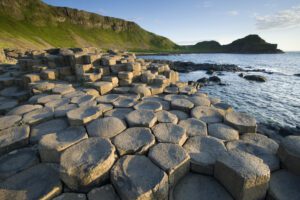
A UNESCO World Heritage Site, this geological landmark in County Antrim features unique hexagonal basalt columns formed by volcanic activity.

With beautiful scenery and abundant wildlife, this park is home to the only native red deer population in Ireland and offers various outdoor activities such as hiking and cycling.
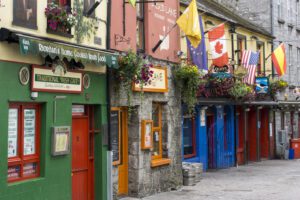
Renowned for its lively atmosphere, colourful streets, and strong arts scene, Galway is a cultural hub that hosts numerous festivals throughout the year.
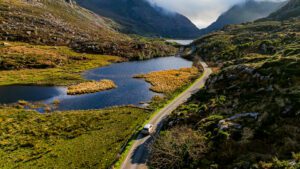
The stunning drive showcases some of Ireland’s most picturesque landscapes, from mountains and lakes to coastal views.
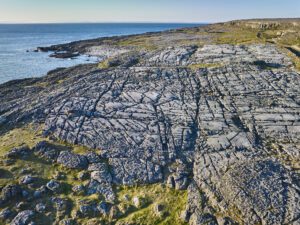
Famous for its unique karst landscape, the park is rich in flora and fauna as well as archaeological sites.
What to Visit in Dublin?
When you have finished exploring the four provinces of Ireland, take a look a little closer to home with the best of what Dublin has to offer on The Shelbourne’s doorstep.

Built in the 13th Century on the site of a Viking settlement, Dublin Castle served as the seat of British rule in Ireland and today is where Irish presidents are inaugurated and various state functions are hosted.
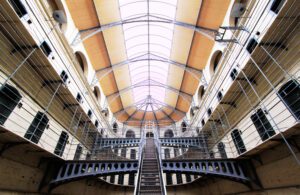
Having once housed revolutionaries who played significant roles in Ireland’s independence movement, it is now known for its unique atmosphere and heartbreaking stories it holds.

Visitors can admire the architecture, stained glass windows, and choral recitals in this 12th Century city landmark.

Enjoy a guided or self guided tour of the home of the famous stout, and round off your trip with a sip of the black stuff in the rooftop Gravity Bar.

This exhibition covers the history of the Irish diaspora and emigration to other countries.

View the Book of Kells in the Old Library, and embark on an immersive journey in the new digital exhibition.
Some Points to Consider When Visiting Ireland
Currency
The Republic of Ireland uses the euro, whereas Northern Ireland accepts GBP Pound Sterling. When travelling north of the border be prepared to exchange currency.
Weather
The weather in Ireland can be unpredictable to say the least. In general Ireland enjoys a mild temperate climate. Rainfall is to be expected, particularly in Western areas closer to the Atlantic coast. January and February are the coldest months of the year, and May and June are the sunniest. Temperature extremes are rare but conditions can be changeable and visitors are advised to pack accordingly.
Tipping
Tipping is not compulsory but typically a tip of 10% for good service in a bar or restaurant is commonplace.
Irish Language
English is spoken throughout Ireland and is typically used as the first language outside of some specific rural areas. Irish is still commonly spoken in the Gaeltacht regions. The Gaeltacht covers large areas of Donegal, Mayo, Galway and Kerry, as well as parts of Cork, Meath and Waterford.
Driving in Ireland
In Ireland, vehicles drive on the left side of the road. Familiarise yourself with local road signage. Speed limits are displayed in kilometres per hour.
Departing Ireland From Dublin Airport
Platinum Services at Dublin Airport
Arriving or departing passengers can avail of Dublin airport’s private terminal for a VIP personalised treatment with private check in, security, suites for relaxation, showers, drinks, dining and a chauffeur driven service to your aircraft. Explore Dublin Airport’s Platinum Services for more.
U.S. Preclearance
The US preclearance facility at Terminal 2 in Dublin Airport allows US bound passengers to undertake al US immigration and customs inspections at Dublin Airport prior to departure, meaning passengers are treated as domestic US arrivals upon arrival. As well as benefiting Irish nationals travelling to the US, pre clearance at Dublin airport has an added benefit for onward connecting passengers travelling to the US. Passengers who clear the US pre clearance facility will have their baggage checked through to their final destination.
You might also like
A President’s Choice
Even before becoming President of the United States, John F Kennedy recognised that only The Shelbourne would provide the elegance, luxury and social stimulation he was seeking when he visited Dublin with his wife Jacqueline in 1958. Naturally, it was again his choice when he returned to Dublin for an official visit in 1963.
The Original Ladies Who Lunch
In the days when it was less than acceptable for women to frequent bars – even with their husbands – The Shelbourne provided The Causerie, a beautiful lounge overlooking St Stephen’s Green where ladies could indulge in a smorgasbord of dainty open sandwiches while recuperating from their trawls through Dublin’s finest shops.


